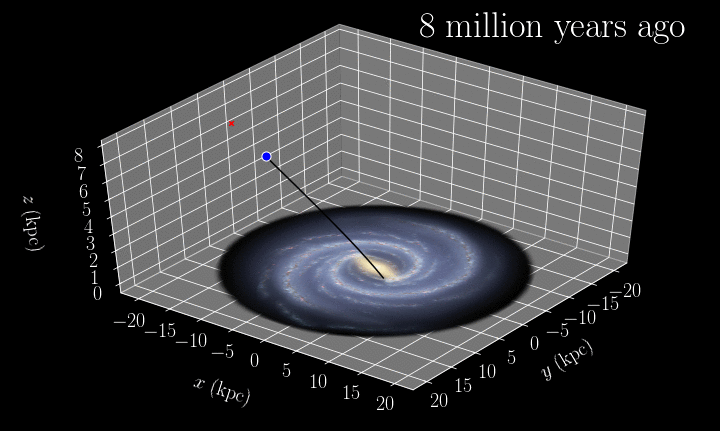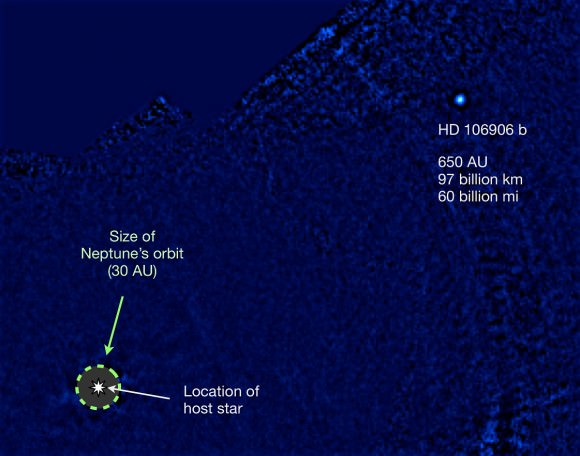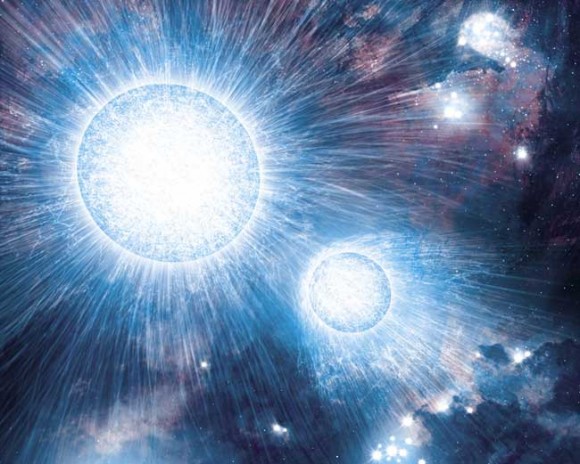Start talking about Venus and immediately my mind goes to those images from the Venera space probes that visited Venus in the 1970’s. They revealed a world that had been scarred by millennia of volcanic activity yet as far as we could tell those volcanoes were dormant. That is, until just now. Magellan has been mapping the surface of Venus and between 1990 and 1992 had mapped 98% of the surface. Researchers compared two scans of the same area and discovered that there were fresh outflows of molten rock filling a vent crater! There was active volcanism on Venus.
Continue reading “Volcanoes Were Erupting on Venus in the 1990s”This Star has been Kicked Out of the Milky Way. It Knows What It Did.

Every once in a while, the Milky Way ejects a star. The evicted star is typically ejected from the chaotic area at the center of the galaxy, where our Super Massive Black Hole (SMBH) lives. But at least one of them was ejected from the comparatively calm galactic disk, a discovery that has astronomers rethinking this whole star ejection phenomenon.
Continue reading “This Star has been Kicked Out of the Milky Way. It Knows What It Did.”This Exoplanet Is Turning Planetary Formation Scenarios Upside Down

What the heck is that giant exoplanet doing so far away from its star? Astronomers are still trying to figure out the curious case of HD 106906 b, a newly found gas giant that orbits at an astounding 650 astronomical units or Earth-sun distances from its host star. For comparison, that’s more than 20 times farther from its star than Neptune is from the sun.
“This system is especially fascinating because no model of either planet or star formation fully explains what we see,” stated Vanessa Bailey, a graduate astronomy student at the University of Arizona who led the research.
HD 106906 b is 11 times the size of Jupiter, throwing conventional planetary formation theory for a loop. Astronomers believe that planets gradually form from clumps of gas and dust that circle around young stars, but that process would take too long for this exoplanet to form — the system is just 13 million years old. (Our own planetary system is about 4.5 billion years old, by comparison.)

Another theory is that if the disc collapses quickly, perhaps it could spawn a huge planet — but it’s improbable that there is enough mass in the system for that to happen. Perhaps, the team says, this system is like a “mini binary star system”, with HD 106906 b being more or less a failed star of some sort. Yet there is at least one problem with that theory as well; the mass ratio of the planet and star is something like 1 to 100, and usually these scenarios occur in ratios of 1 to 10 or less.
“A binary star system can be formed when two adjacent clumps of gas collapse more or less independently to form stars, and these stars are close enough to each other to exert a mutual gravitation attraction and bind them together in an orbit,” Bailey stated.
“It is possible that in the case of the HD 106906 system the star and planet collapsed independently from clumps of gas, but for some reason the planet’s progenitor clump was starved for material and never grew large enough to ignite and become a star.”

Besides puzzling out how HD 106906 b came to be, astronomers are also interested in the system because they can clearly see leftovers or a debris disk from the system’s formation. By studying this system further, astronomers hope to figure out more about how young planets evolve.
At 2,700 degrees Fahrenheit (1,500 degrees Celsius), the planet is most easily visible in infrared. The heat is from when the planet was first coalescing, astronomers said.
The astronomers spotted the planet using the Magellan telescope at the European Southern Observatory’s Atacama Desert in Chile. It was visible in both the Magellan Adaptive Optics (MagAO) system and Clio2 thermal infrared camera on the telescope. The planet was confirmed using Hubble Space Telescope images from eight years ago, as well as the FIRE spectrograph on Magellan that revealed more about the planet’s “nature and composition”, a press release stated.
The research paper is now available on the prepublishing site Arxiv and will be published in a future issue of Astrophysical Journal Letters.
Source: University of Arizona

